I never do my end of year write-ups before January. There’s two reasons for that. One is that I always hope my next read will be amazing, and that’s as true in late December as it is say in mid-March. The other reason is that I like the sense of completeness of the year definitely being done and being able to look back over it as a reading whole.
As it’s now January my end of year should be up soon. In the meantime, I did have a good December. I usually do if only as there’s more time to read when I get a break from work (hence July being such a powerhouse of a reading month this year). Even so, the worst in December was fun but forgettable and the best were outstanding.
Pond, Claire-Louise Bennett
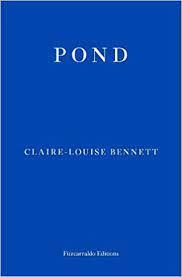
We start with a good book that wasn’t entirely me. This is a series of maybe-linked short stories, some very short indeed. They all feature an unnamed woman living in an English village. She’s a solitary sort but happily so and the stories are observations and vignettes from her life.
It made Radhika’s Best of 2016 list and I can see why as it’s nicely written and has very much its own voice. It would make a good later winter/early spring read and it’s published by Fitzcarraldo which is always a good sign. Lisa Hill at ANZ LitLovers was less taken though and writes a countervailing negative view here. I’m somewhere between Radhika and Lisa on this one. I liked it but didn’t love it and it’s not a keeper for me.
Carmilla, Sheridan Le Fanu
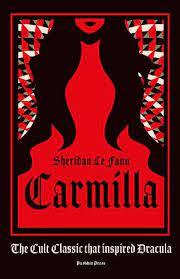
Before Dracula there was Carmilla. Actually, my understanding is that before Dracula there were quite a few vampire tales. Enough so that it’s a bit odd nobody in Dracula says “hey, are we dealing with a vampire here?” Still, Carmilla is one of the more famous ones.
We’re in gothic potboiler here with a lovely young woman who lives in an isolated castle with her father and minimal staff. The beautiful Carmilla literally crashes into their lives after a carriage accident and they agree to look after her while she recovers her health. Is Carmilla all she seems though? No, of course she’s not. Before too long our innocent heroine is fading from an illness that’s claiming the lives of many of the area’s young women and her attachment to Carmilla is starting to look distinctly unwholesome.
It’s often said there’s a lesbian subtext to Carmilla. In modern terms that’s true, but for when it was written I’d say it was probably less a subtext and more neon highlighting. It’s a clear influence on Stoker’s later Dracula and it’s a lot of fun. One for anyone with a fondness for classic Gothic fiction. Guy Savage wrote about it here.
Norwegian Wood, Haruki Murakami (translated by Jay Rubin)
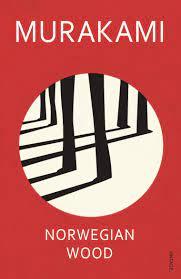
It’s years since I’ve read any Murakami. I used to be something of a fan but I got tired of his idiosyncrasies. I’m not sure why I suddenly went back to him but I’m glad I did, as while the usual Murakami issues with depictions of women remain this was strong. I’m not at all surprised it was a massive hit for him.
We open on a flight in the 1980s. A muzak version of The Beatles’ Norwegian Wood sends the narrator back into his memories and of a time as a young college student when he was in love with two different women. We know right from the beginning that one of them killed herself.
This is a dark novel, much more so than I expected. For some reason I had the idea that it was a rather sweet love story, rather than a story of mental illness, depression and suicide.
The narrator as ever with Murakami works in a jazz shop (part time as he’s a student) and loves F. Scott Fitzgerald. The female characters all want to sleep with him (it’s that which drives most of the story). It’s Murakami.
Even so, despite my caveats and Murakami’s issues it is powerful. Tony wrote about it here having read it first when he was younger and again more recently. He rightly brings out the youthful energy of the book and its copious charm, but also the dark undercurrents of mental illness against a background of social change. If you’ve ever wanted to try Murakami to be honest you could do much worse than starting with this one.
Space Invaders, Nona Fernández (translated by Natasha Wimmer)
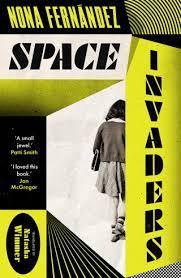
This is a candidate for my end of year list. Again it’s an act of narrative memory, here adults looking back on their time as children in 1980s Chile under Pinochet. It’s a slight volume, novella more than novel, but spectacular in how it builds an atmosphere of dread and everyday brutality.
It’s a mix of dreams, mingled voices, metaphor and memory and yet despite being really genuinely cleverly put together is also immensely readable. Jacqui refers to it as a literary collage, which is nicely put and captures something of its layered complexity.
Jacqui has written more on this here than I have time for and I strongly encourage you to read her review if you haven’t already. This made Jacqui’s end of year list and I’m not even slightly surprised.
The Kaiju Preservation Society, John Scalzi
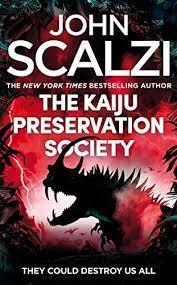
Kaiju if you don’t know are basically giant monsters like Godzilla or the creatures from the recent Pacific Rim films. John Scalzi is an extremely successful SF author that I’ve not previously read and I fancied something lightweight at this point in the month. Scalzi himself described this as a pop song of the novel and it’s the slightly silly tale of a New York delivery guy who ends up working for a cross-dimensional organisation that protects kaiju that live on a parallel earth.
It’s fun and I wouldn’t be at all surprised to see it appear at a movie theater near you at some future point. It’s let down a bit though by pretty much all the characters having the same wry comic tone which makes them a bit samey. Still, I wanted a light novel and it certainly delivered on that. Good thing it did too, because up next was…
Days in the History of Silence, Merthe Lindstrom (translated by Anne Bruce)

Delighted to see the translator on the cover here. This is a Norwegian novel about an aging couple told from the wife’s perspective. Her husband literally hasn’t spoken a word for years now. She’s become his carer, but it seems less a case of dementia (at least at first) and more that he chose silence.
As the novel develops it becomes apparent the silence goes back much further than when the husband literally stopped talking. He comes from a family that was wiped out in the Holocaust and is left with trauma from that but his wife never wanted to discuss it, to acknowledge it. They’ve never even told their now adult children. She gave up a baby for adoption when she was 17, but she won’t speak of that either. More recently they sacked their much-loved housekeeper but while it’s easy for the reader to guess why they can’t explain it to their children because there’s so much the children don’t know of their lives.
It’s powerful and well written but for me it became claustrophobic and airless. This terrible marriage, these people who’d somehow wasted their lives in silence. Guy wrote about it here (which is where I learned about this one) and was hugely impressed by it so it’s one you may wish to consider.
New Hope for the Dead, Charles Willeford
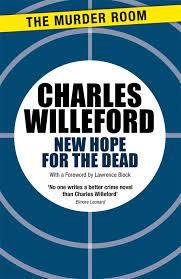
This is another one that Guy introduced me to, here. It’s one of Willeford’s Miami-based Hoke Moseley novels. Hoke’s part of the homicide squad, all of whom have been told to live within the city district which is an issue as Hoke is financially crippled by his divorce settlement. He’s also just got his first female partner, Sanchez, and while he’s no problem with women cops it’s painfully apparent he’s no idea how to connect with a woman on an equal working level.
Hoke and Sanchez are called to a drug overdose, but the dead junkie was the son of a drug-gang lawyer and he was living with his step-mother who Hoke thinks is gorgeous and up for going to bed with him. The suicide doesn’t feel quite right to him anyway and investigating it gives him a reason to keep talking to the step-mother…
I liked the last Hoke Moseley novel I read and this one is just as much fun. I said in my review of the first of these “If you’re even slightly a crime fan, I can save you some time on this review. You’ll like this one. Go pick up a copy.” I stand by that.
The Topeka School, Ben Lerner

This is an interesting one. My wife bought me this for Jolabokaflod (look it up, it’s delightful). It’s very much a novel of the Trumpian post-truth era. We’re in the 1990s and Adam is a college student and debate star, but college-level debate isn’t as most of us would imagine it. Instead it’s all about the spread – getting as many assertions in as you can so your opponent loses not because your argument is better but because they can’t keep up.
The book’s told from Adam’s own perspective and from the perspectives of each of his parents, who have their own issues and stories both being members of a nationally famous therapeutic community. Adam’s mother has had breakaway success which has made her something of a celebrity, putting strains on her friendships and marriage and exposing her to the hatred of men she’s never met who take exception to her work.
So we’re in an examination of toxicity here, both in the public sphere through the debating tournaments whose champions will become the politicians of our own age and privately through the men who feel entitled to harass a woman they’ve never met because she wrote something they didn’t like.
It’s semi-autobiographical. Lerner was a debating champion and his mother was an academic who had breakout success, but that’s not what’s interesting about it. What persuades here is seeing how we got where we are (or at least how contemporary America got where it is, but it’s not like Europe’s exactly immune to this stuff). A difficult read in many ways, but difficult because persuasive.
Journeys, Stefan Zweig (translated by Will Stone)
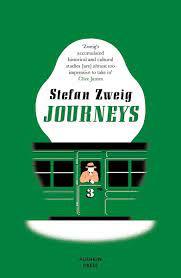
I usually have a short story collection on the go alongside my full-length reads. In late December I instead read this collection of feuilletons by Stefan Zweig, each a short piece by him on a location such as Antwerp, Seville and Bruges.
These pieces were written over a span of years ranging from the 1920s into the late 1930s. The latter are inevitably more powerful. I sometimes find Zweig a bit overblown as an author and that was the case for me with most of these here, but that diminishes as he has more serious subjects to write about and his account of a London shelter for Jewish refugees was genuinely moving.
Karen wrote about this here and liked it a lot more than I did. In fairness, I’m not as much of a Zweig fan as most so if you do like Zweig the odds are you’ll be closer to Karen on this than me.
In Our Mad and Furious City, Guy Gunaratne
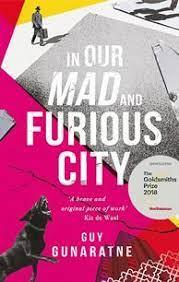
Final book of 2022 and a great justification of why I don’t like to write end of year posts too early. I don’t know yet if this will be on my best of 2022 list, but it’s definitely a candidate.
We’re on a North London council estate. A soldier has been killed and the streets are full of tension. The novel follows a few of the estate’s residents, most of them friends but one an older woman and another a paralysed old man reliving his memories of coming to Notting Hill from the West Indies decades before.
This is a great London novel. One of the characters is named Selvon and as with Sam Selvon’s masterful The Lonely Londoners Gunaratne captures not just the lives of his characters but their speech too. It’s a vernacular novel, ennit, but written with skill so that each voice is quite distinct and even if you’re not familiar with the way people speak in that part of London you become familiar with the rhythms of it.
Unusually for me I both read this and listened to it, as I had it both on Kindle and Audible. If you do listen to audiobooks this might be worth taking that way as the voice acting is pretty much the best I’ve encountered and really helps bring the characters and style of speech to life.
This got huge attention back when it came out and deservedly so. A great book to end the year on.
Right, that’s December ’22. See you soon for my best of the year post!
